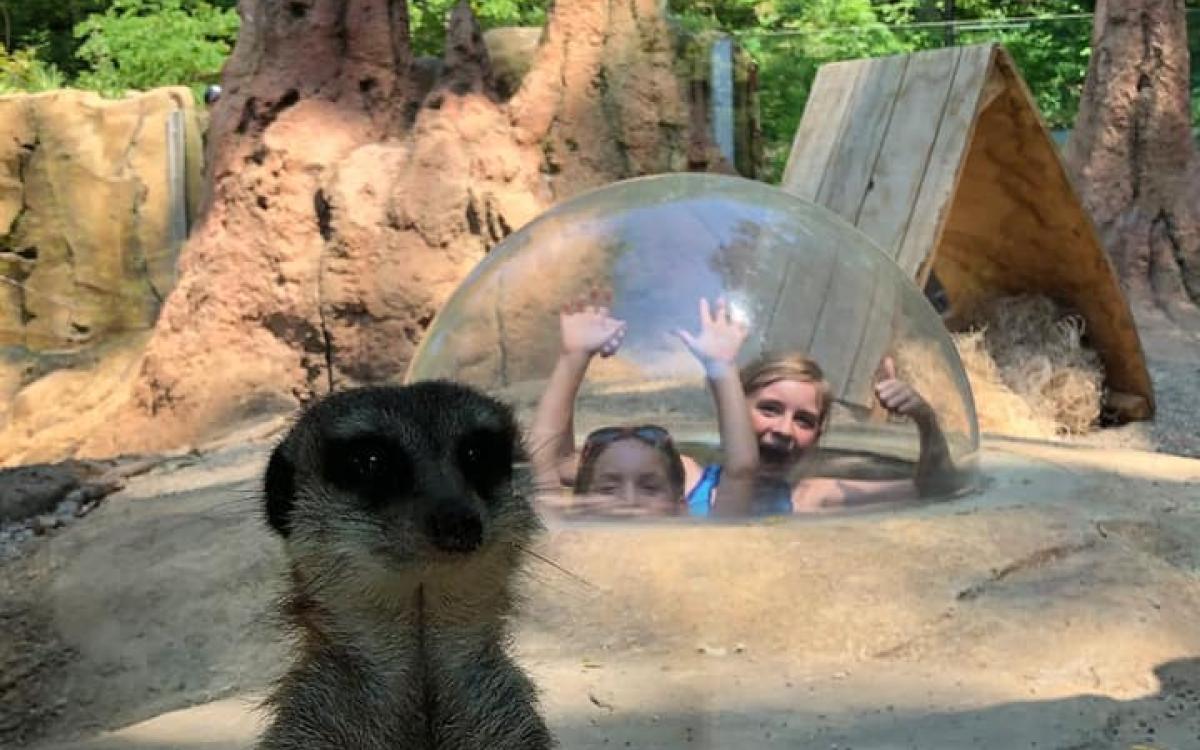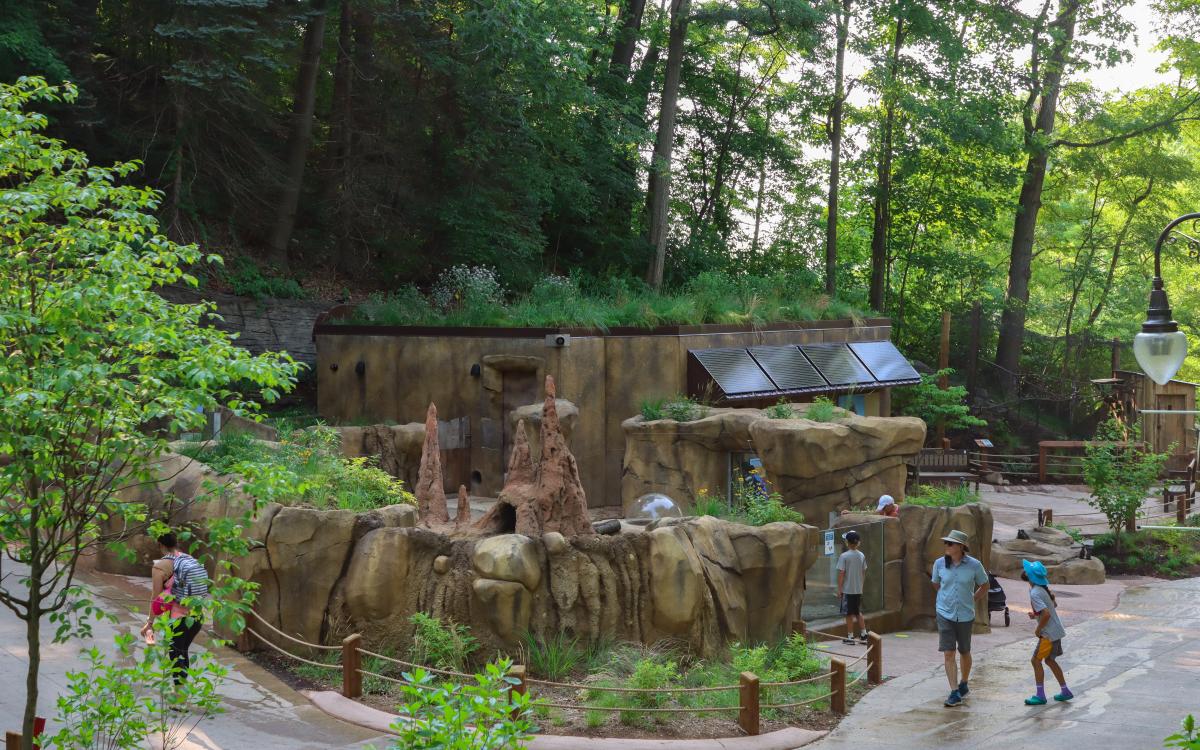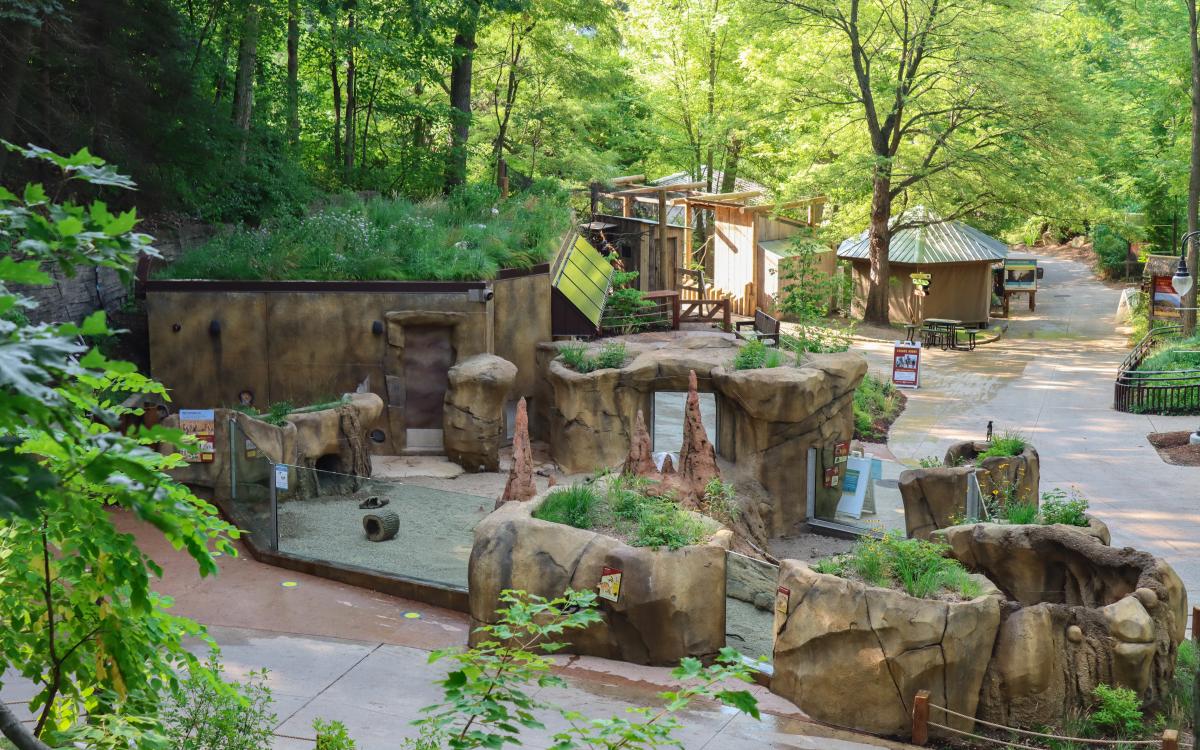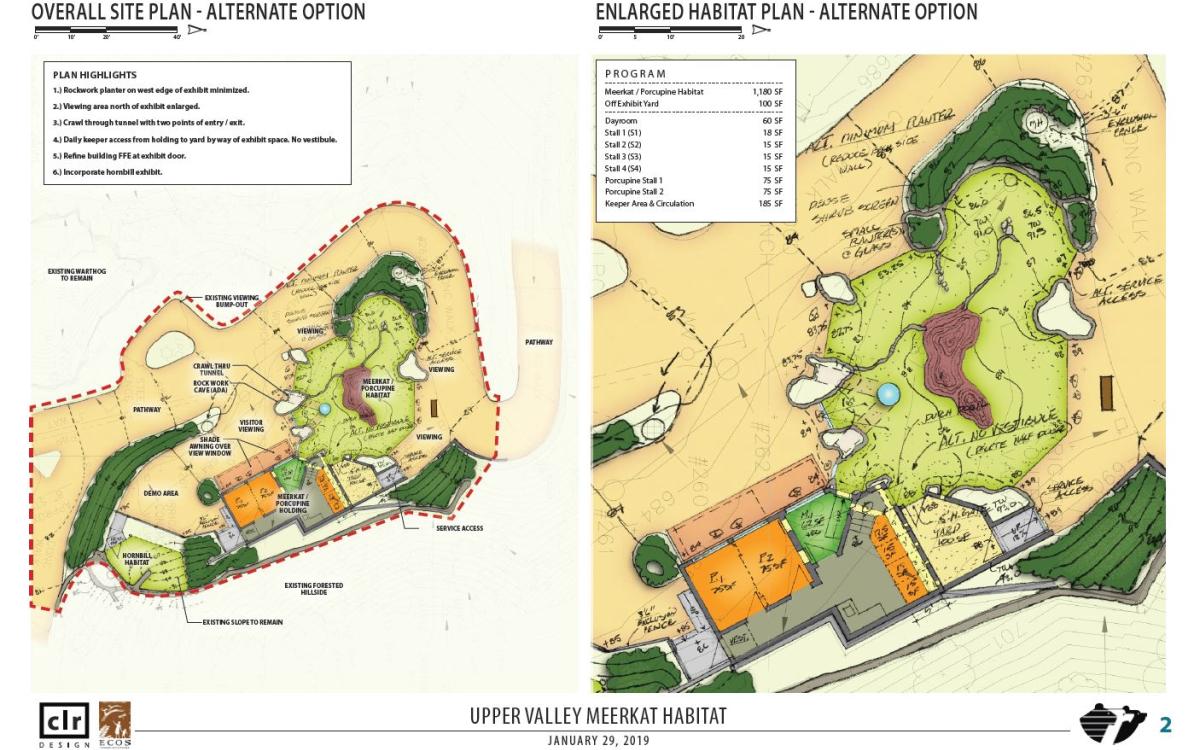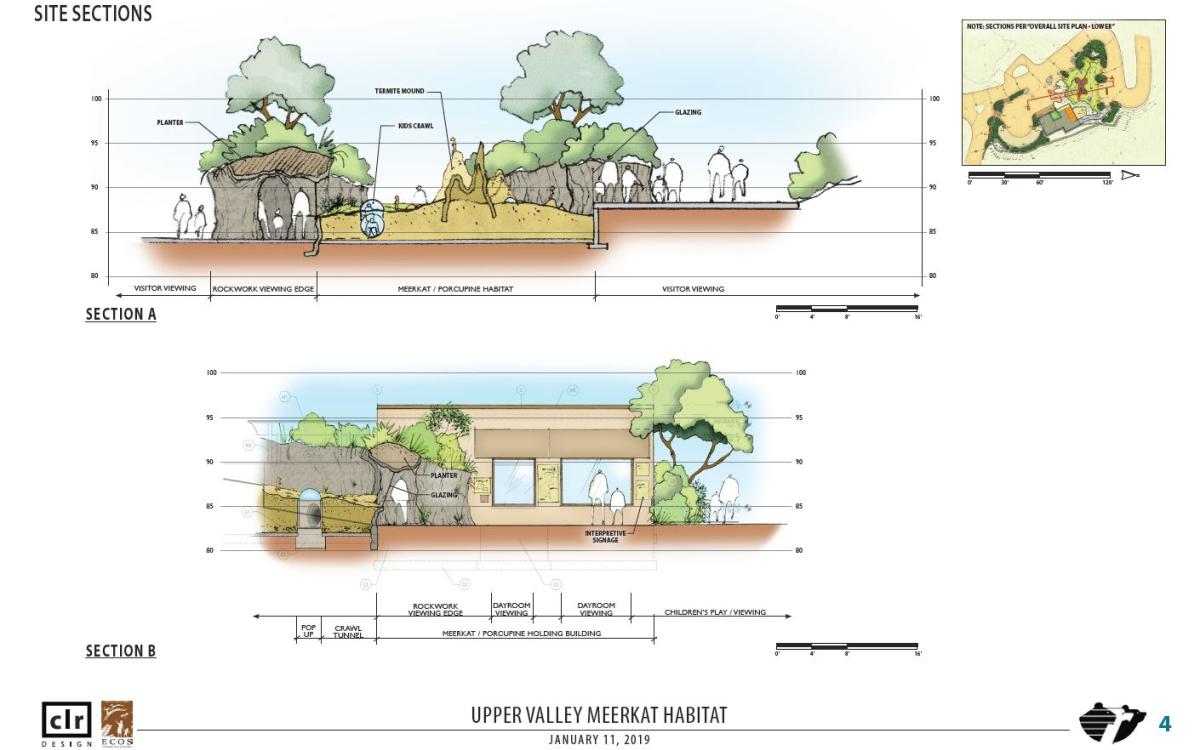Grand Rapids, MI
United States
There are many sustainability measures that helped us achieve accreditation allowing us to be the first Zoo to receive SITES Gold certification, providing a benchmark for others to aspire to.
Only native plantings were used on the site which included a green roof. Plantings mimic the indigenous landscape of the African Savanna. Some of the native plantings were actually grown from locally harvested seeds. Maintenance equipment has no CO2 emissions. Concrete is the majority of the construction material. Its recycled content is significant and can be recycled at the end of its useful life. LED light fixtures with low BUG ratings were installed and their power is offset by PV panels located on a shade structure. Rain gardens utilize prior leaching basins. Rain that is not absorbed goes through a Nutrient Separating Baffle Box (NSBB) at the storm outflow of the Zoo property. The micro watershed of the Zoo is all sent to this device before it enters the pond near the Zoo entry. This pond was also modified to be able to handle a 100 year rain event at the zoo; cleaning, storing and reusing millions of gallons annually. Proven energy conservation measures, passive heating and cooling strategies will be utilized.
Standards in animal care, natural light and conditions similar to the animal’s natural environment will be exceeded. Efforts will be made to provide thermal comfort in interior and exterior spaces for animals. The landscape has been designed to imitate the native landscape of the animal’s natural habitat through the use of native plants from Michigan while contributing to water, energy, and conservation goals. The success of the animal’s welfare has been measured and monitored against clear rules and regulations both set by the Zoo and the Association of Zoos & Aquariums (AZA). The AZA demands the highest standards in animal care and oversees conservation and species survival programs.
The project has been designed to inspire community conservation, educate and change attitudes surrounding the zoo as a result of creating a lasting impact from the guest’s experience. The public will be connected to nature and wildlife in a transformational way that will be demonstrated through the leading-edge sustainable practices of SITES. A soothing atmosphere will be created through providing ample areas of respite, shade, and refuge. We will educate the staff on how the exhibit and project demonstrate environmental sustainability so that they are able to share the Zoo’s story. Signage will be displayed throughout to educate guests as they travel through the exhibit. The walkway that is created to access the exhibit will be ADA accessible with areas to rest and sit along the path. The project will inspire visitors to connect with wildlife and the natural environment.
“As a conservation organization, we have been building to green standards for some time," explained Allmon Forrester, Director of Facilities, Planning and Sustainability at the John Ball Zoo. "However, LEED does not always fit well with animal habitats. The Sustainable SITES Initiative, however, totally encompasses our values as an organization and receiving SITES certification is a great way for us to communicate to the community our dedication to sustainability.”
Photos courtesy of John Ball Zoo.

